By Jeffrey A. Rendall, Images from TaylorMade
CARLSBAD, CA – Of all the products on the golf market today, forged irons appear the most resistant to change. Even with new manufacturing techniques being employed, most forged golf clubs still look much like their cousins from yesteryear.
But as is the case with most things in life, looks can be deceiving. And when it comes to TaylorMade Golf’s finest forged irons, (the Tour Preferred series), there’s actually a lot going on underneath the surface that separates them from the old days when you could walk into a store and pick out a set that didn’t look much different from what Arnold Palmer was using.
I asked Brian Bazzel (Product Creation Manager for Irons at TaylorMade) how the TP irons differed from their predecessors, and as expected, he said there was a serious distinction. “Our Tour Preferred irons are created with a 6-step net-forging process,” he explained. “This process allows us to precisely form the sole and leading edge so that they’ll perform exactly the way they’re supposed to, and it also gives these irons a remarkable level of beauty and elegance.”
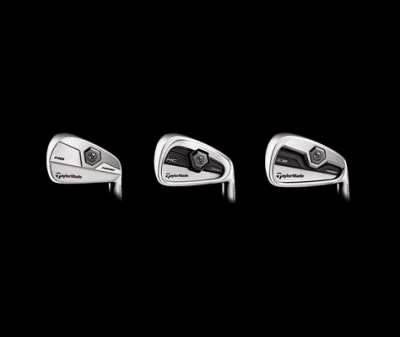 |
Ah, aesthetics are still important, and I’m guessing it’s a good part of the reason why so many players continue to love forged irons. Taking nothing away from some of the newer cast models, forged clubs look natural, so ‘beauty and elegance’ are part of the whole experience.
Bazzel continues, “The Precision-Weight Port allows us to keep the center of gravity of the club dialed into its original design, which is critical when building custom clubs with different shafts and grips that require different head weights.”
The precision-weight port is positioned in the back of the TP irons, a hexagonal shaped device that almost looks like you could adjust it yourself, similar to the company’s famous adjustable metal woods.
But here, the factory trained staff does all the modifying. “The traditional method is to change the head weight to add weight to the hosel or heel. The more weight added, the more the CG moves towards the heel, altering the intended performance of the club.”
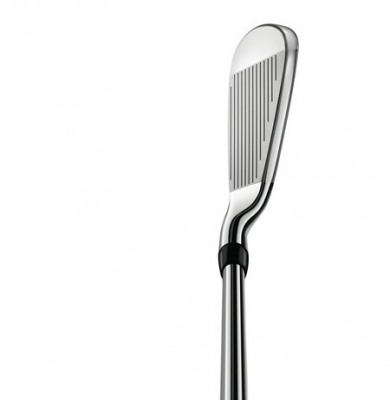 |
While we’ll leave the weight issues to the engineers, the TP Irons’ unique forging process also adds a little something extra for those seeking distinction in their forged clubs.
“The 6-step forging process adds a couple more forged tools compared to the traditional forging method,” Bazzel said. “The result is a forged iron that is extremely close to the final shape – thus, it requires less hand-polishing. Hand polishing can lead to inconsistencies in the look and performance.”
There’s more. “We make use of several materials in the Precision-Weighting Port to finalize the head weight, including titanium, aluminum, stainless steel and tungsten,” Bazzel added.
It sounds like everything but the kitchen sink goes into these things… but then again, several of those materials probably are included in your kitchen sink. It just proves they’re versatile.
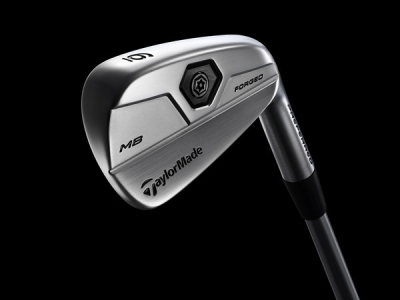 |
That’s just part of the complex technical nature of modern golf equipment, which can be pretty confusing when considering all the makes and models out there. Sometimes it has to do with what fits your eye, but it also should be what fits your swing.
What advice do the TaylorMade folks give in picking out a set that’s right for you?
Again, Bazzel expounds. “It always helps to do a little research to determine the types of irons that will provide the kind of performance you desire. For example, Tour Preferred irons are designed for the low-handicap players who are willing to sacrifice forgiveness for increased workability and versatility, forgiveness.”
Or in my case, a decent ball-striking mid-handicapper who likes the looks of forged irons.
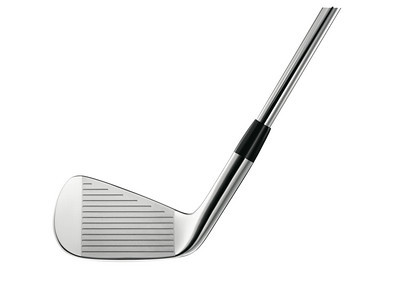 |
“Meanwhile, our new RocketBallz irons are designed to provide control and versatility in the short-irons and distance and forgiveness in the longer irons,” Bazzel said.
“The club’s shape and overall look is important too. Of course you need to try the product, and most stores today have demo and/or fitting equipment that allows you to get a feel for the club and its performance. It’s always best to speak with the product expert in the shop and to get custom-fit, to ensure the irons fit your swing.”
Without a doubt. If you’re going to pay the money to buy the best of the best, it doesn’t make sense not to ensure that it’s a good ‘fit.’ High-end irons always come with prices to match, so make sure the experts are involved in the decision-making process.
Another interesting aspect of the TP irons (which I gathered from checking out the TaylorMade website) was the possibility of combining different models into a mixed-set, which ultimately resulted in my choosing the longer irons in the more-forgiving MC (Muscle Cavity) line, and the scoring clubs from the more traditional blade-like MB (Muscle Back) line.
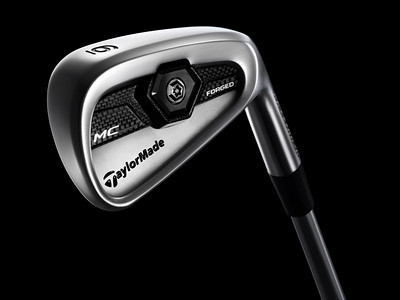 |
And according to Bazzel, mix-and-match is becoming more common. “Combo sets are growing more and more popular as players realize the benefits of combining forgiving long-irons and versatile short-irons in a single set, no matter the level of the player. At this year’s Shell Houston Open, for example, of the 36 sets of TaylorMade iron sets in play, one-third were made up of multiple models.”
The pros should know, and the company is now far beyond its reputation as a metal-woods only specialist. There’s only so much you can do in a laboratory to design golf clubs, so the input from professionals is invaluable.
While the TaylorMade TP irons didn’t exactly boost me into the ranks of Tour players, I would say they’re certainly easy to hit, look the part – and best of all, the results speak for themselves. I was able to shape shots with them, something I can’t claim with all the clubs I’ve tried.
I particularly enjoyed the 2-iron that I was able to get with the set, which filled in nicely on those shorter holes that required a more precise drive.
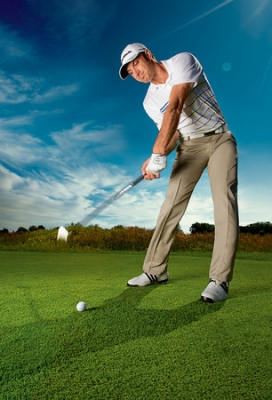 |
We do not endorse products or compile a “hot list” of the equipment we test, though we can definitely recommend that you give the TP irons a try if you’re searching for a top-of-the-line forged iron with attractive looks and performance to match.
Bazzel says there’s more to come, too. “Iron technology has come so far in just the last five years and there is definitely more room for improved performance within the guidelines.”
“TaylorMade has been pushing the limits in fast-faced irons, making them thinner and more flexible so they promote more ball speed and distance. Our continued research on faces is helping us uncover new opportunities for performance enhancements in regard to feel and accuracy.”
It’s heartening to see companies putting resources behind golf clubs that not only keep performing better, they look great, too. The TP irons have a classic look that traditional forged iron players will appreciate, and the technological advancements that will make the game more fun to play.
All in all, something to look into if you’re shopping for irons.
Details:
TaylorMade’s Tour Preferred Irons
Available at your higher-end golf retailers and club pro shops.
Check out more information about TaylorMade products at: www.taylormadegolf.com.
TaylorMade became famous for pioneering metal woods, but the company now produces everything from metal woods to wedges to putters. And since joining with Adidas (and Ashworth), don’t forget footwear and clothing. Check out the website for more information.
| Related Links | Comments on this article? | |
|
Maryland National Golf Club Hollow Creek Golf Club Rocky Gap Resort PB Dye Golf Club in Ijamsville Whiskey Creek Golf Club |
E-mail Jeff Rendall, Editor: jrendall@golftheunitedstates.com |











